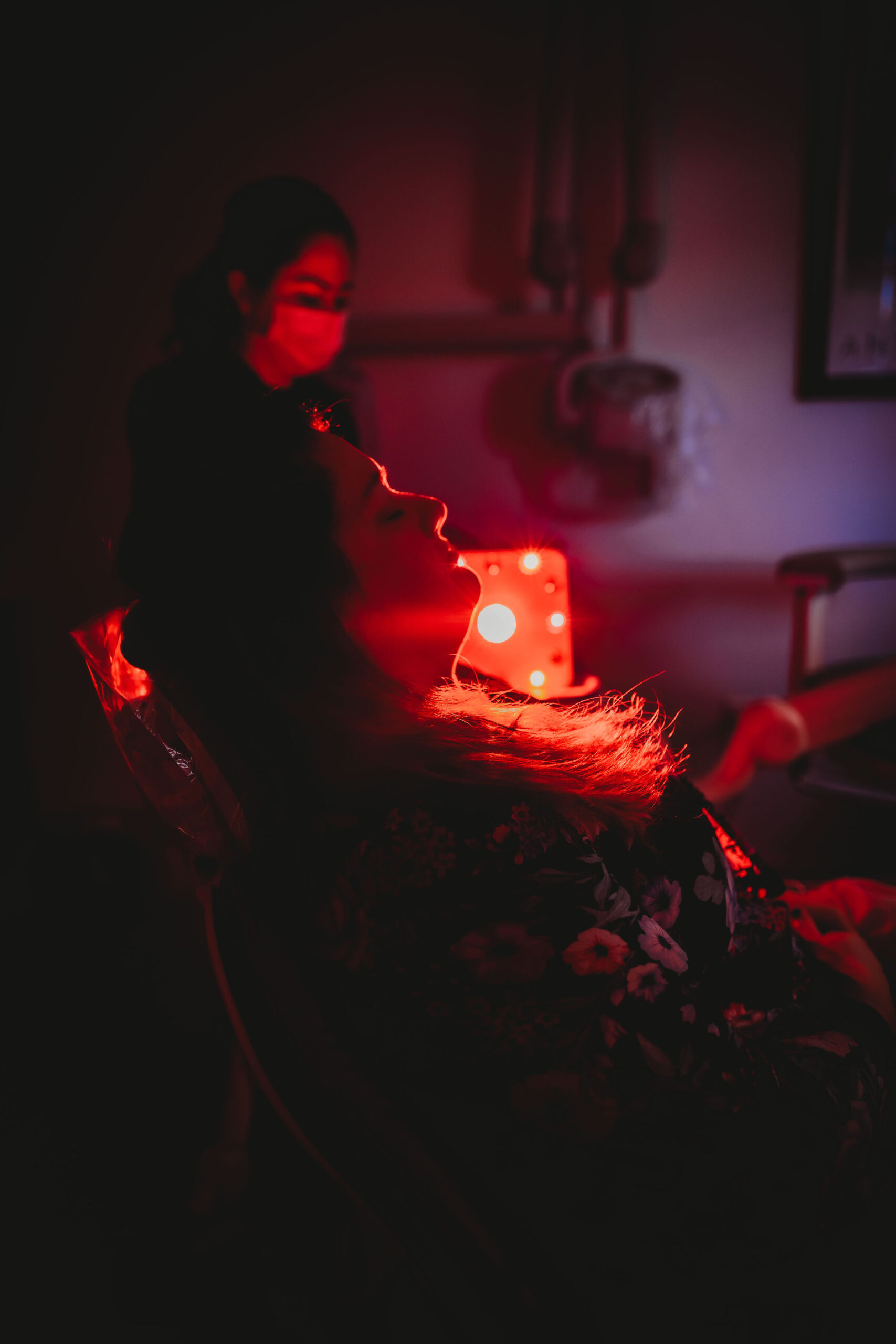Red light therapy, or photobiomodulation, is a non-invasive treatment that treats the cells using specific wavelengths of light. In dentistry, these technologies are used to reduce inflammation, expedite wound healing, and manage post-operative discomfort. At Well Rooted Dentistry, we utilize red light therapy to help our patients recover and feel better faster.
A Brief History
Dr. Endre Mester was the first to describe photobiomodulation, or Low Level Laser Therapy (LLLT), as a treatment method in any capacity. Dr. Mester was a Hungarian physician who began experimenting with lasers in 1967, only a year after they were first invented. Because of his research, we know the many positive biological effects of photobiomodulation, and millions of patients have benefitted from having access to this incredible technology.
How It Works
One of the simplest ways to understand photobiomodulation is to break down terms:
- Photo: light (from a laser)
- Bio: creating a biological response
- Modulation: to modify or control something (cells)
Low Level Laser Therapy involves using light at a lower energy density than used in other forms of laser therapy. Photobiomodulation utilizes low levels of red and near-infrared light to treat damaged cells and tissue.
For this process to work properly, the wavelength, power density, fluency, timing, and pulse structure of the laser must be perfectly applied. The laser interacts with the soft tissue chromophores hemoglobin and melanin which absorbs the light to stimulate healing.
In basic terms, Low Level Laser Therapy speeds up and intensifies the body’s natural ability to heal itself by releasing cellular energy.
Photobiomodulation in the Medical Industry
Red light therapy is used across many healthcare industries to promote healing and reduce pain. Photobiomodulation can treat a number of conditions, including:
- Arthritis
- Wound healing
- Inflammatory discomfort
- Muscle recovery
- Skin conditions
- Brain injuries
Because photobiomodulation targets several layers of tissue, including the skin, muscles, tendons, and ligaments, you can see why it is so beneficial for dental patients with inflammatory conditions. In fact, one of the most common uses for red light therapy at our practice is treatment of TMJ dysfunction. The specific wavelengths penetrate deep beneath the tissues, delivering therapeutic benefits.
Photobiomodulation in Dentistry
Red light therapy is indicated any time your dentist wants to promote healing in a particular area. This treatment supports protein synthesis, activates enzyme production, reduces oxidative stress, and increases blood flow to target areas.
If you’re familiar with holistic healthcare, you also know that oxidative stress can lead to free radicals. Photobiomodulation encourages a positive oxidative environment so that your cells can function better.
In order to reap the full benefits that photobiomodulation has to offer, you should only use devices that deliver red light in the mid-600 nm range and near infrared in the mid-800 nm range. These ranges show the most significance in clinical settings.
During your procedure, the clinician will simply place the red light near the surface of your skin. Though you will not likely feel any sensations, the light waves will penetrate deep into the tissues. Typically, patients begin with a five-minute session, then increase gradually as needed. Depending on the issue you are treating, multiple sessions may be required for optimal outcomes.
Contact Us Today
Our team at Well Rooted Dentistry believes that dental care should be comfortable, safe, and beneficial for the whole body. For a modern, comfortable, and holistic dental experience, contact our office at (401) 593-1418 today.


